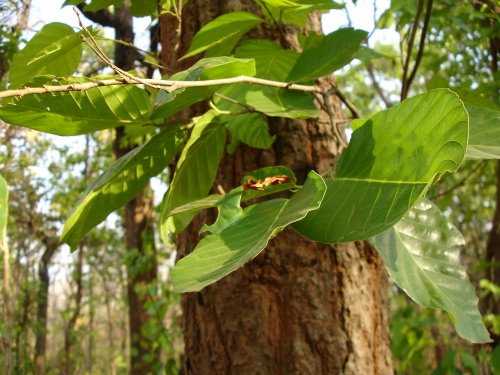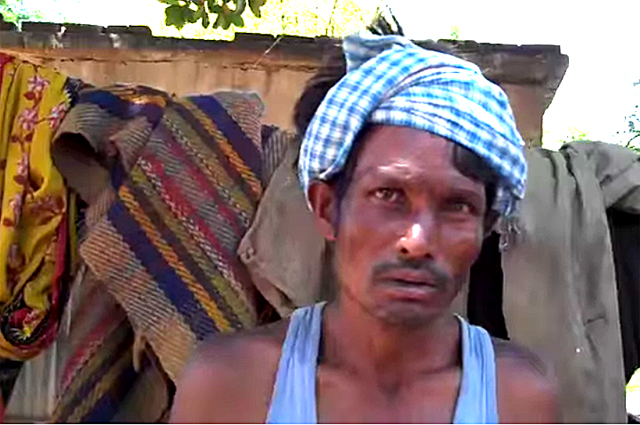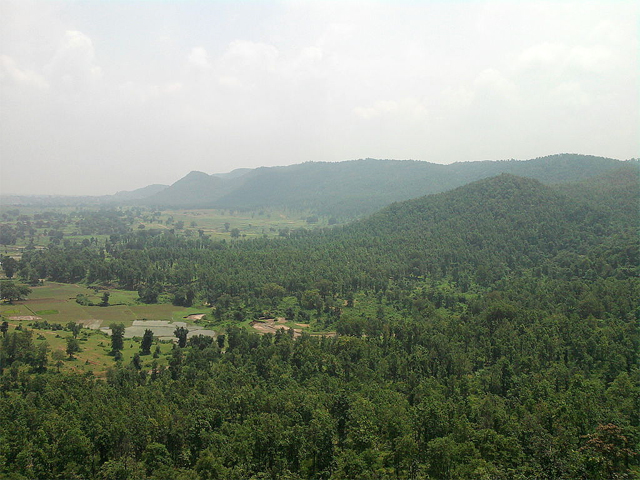Mining for iron ore is destroying the Saranda Forest in the southern part of India’s Jharkhand state and causing serious health problems for the Birhor living in it. An article in the environmental news website Mongabay.com last week describes the growing destruction of the Sal trees, which dominate the forest. It is considered to be the largest sal forest in Asia.

The journalist, Gurvinder Singh, interviews a 22-year old Birhor man named Krishna Birhor who complains that pollution from the mining causes him and numerous other Bihor people in his village, Tatiba, in the West Singhbhum District of the state, to have bouts of fever and vomiting. He gathers herbs from the nearby sal forest to help cure his illnesses but he realizes that it is only a matter of time before the trees are all cut down.
Krishna adds that the mining companies refuse to hire the young tribal people like him because they are not qualified for the jobs.He has been selling herbs that he gathers in the forest, “but the mining has been destroying everything,” he says. “Thousands of trees have been chopped off for mining while our plight has been ignored.” He says that the Birhor die silently every day and nobody cares. All that matters are the truckloads of iron ore going out of the iron mines in the forest.

Tatiba village has about 200 Birhor, many of whom also complain of pollution-related illnesses. The remoteness of the village and the bad roads combine to make nearby health service providers almost inaccessible. The water is so badly polluted that the people have to rely on water from tanker trucks provided by the mining companies. An article from March 2017 also described the dire poverty of Tatiba and the requests by the Birhor living there for a decent cemetery so they could bury their dead.
The bulk of last week’s Mongabay article focuses on the natural wonders of the Saranda Forest, which are rapidly being lost to the mines. With a total area of 82,000 hectares, an estimated 17.6 percent of it, 14,410 hectares, is now destroyed by the mining. Wildlife in the forest has suffered as well as the human inhabitants. An elephant census in the forest in 2010 sighted 253 elephants while a research study done by the Wildlife Institute of India in 2015-16 failed to find even one.

The research team found that the biodiversity in the forest has diminished also. The researchers found only 19 species of mammals compared to earlier studies that had found 30. The number of bird species has also diminished from 148 found earlier to only 116 species more recently.
The lengthy Mongabay piece mentions the various commissions that have investigated the situation without resolving the major issue: the forest sits atop a huge treasure trove of iron ore, one of the largest in the world at over 2,000 million tons of ore, off of which many agencies and corporate actors have made and will continue to make huge fortunes.
School children threatened by constant truck traffic on the roads: that’s their problem. A river that has mostly gone dry due to the absence of forest cover: but so what. Villagers who have to bathe in and drink from polluted streams: who cares? It is not a hopeful story about a tropical forest or its inhabitants.